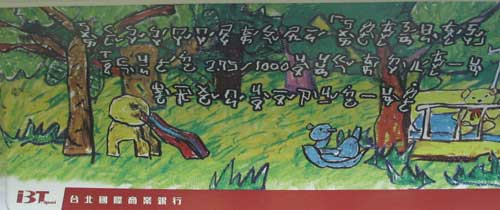Tian of the wonderfully amusing Hanzi Smatter Web site was kind enough to respond to some comments of mine by blurbing my site. I’d like to return the favor.
On a related topic, here’s a section from the Pinyin.info FAQ, which should be going up in June:
I want to get a tattoo with kanji / Chinese characters. What do you recommend?
This is probably not what you want to hear: Don’t get the tattoo. Most tattoos with Chinese characters are seriously flawed.
The chances of you getting something that looks good — and not just to you but also to others, including the hundreds of millions of people who can actually read Chinese characters and know how they’re supposed to look — are quite low. Moreover, tattoos of Chinese characters are seldom written properly or represent a correct, idiomatic translation of the wearer’s desired meaning. On the other hand, the chances of you ending up looking more or less like a fool — at least to those who know Chinese characters — are uncomfortably high. These are important considerations, given that you would need to go through pain and expense to have someone permanently stain your skin with an image that very likely will be done wrong in some important way.
Maybe with some assistance I could get a tattoo done right. Would you help me?
Sorry. I like to help people, but this just isn’t something I’d want to get involved with, especially considering all the things that could go wrong.
I already have a tattoo with Chinese characters. Can you tell me if it’s correct or not?
You might want to try Hanzi Smatter, a site “dedicated to the misuse of Chinese characters (Hanzi or Kanji) in Western culture.”

